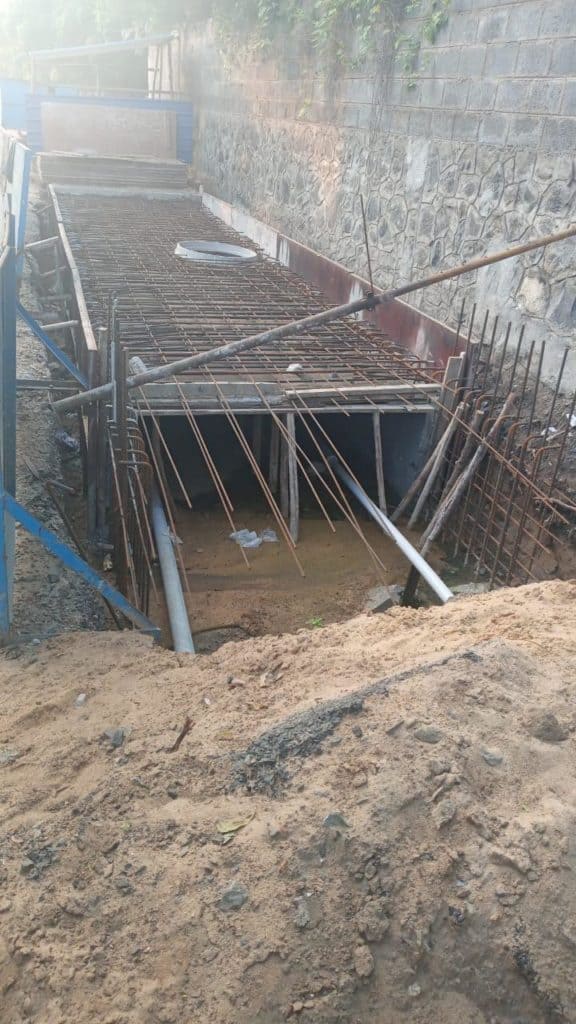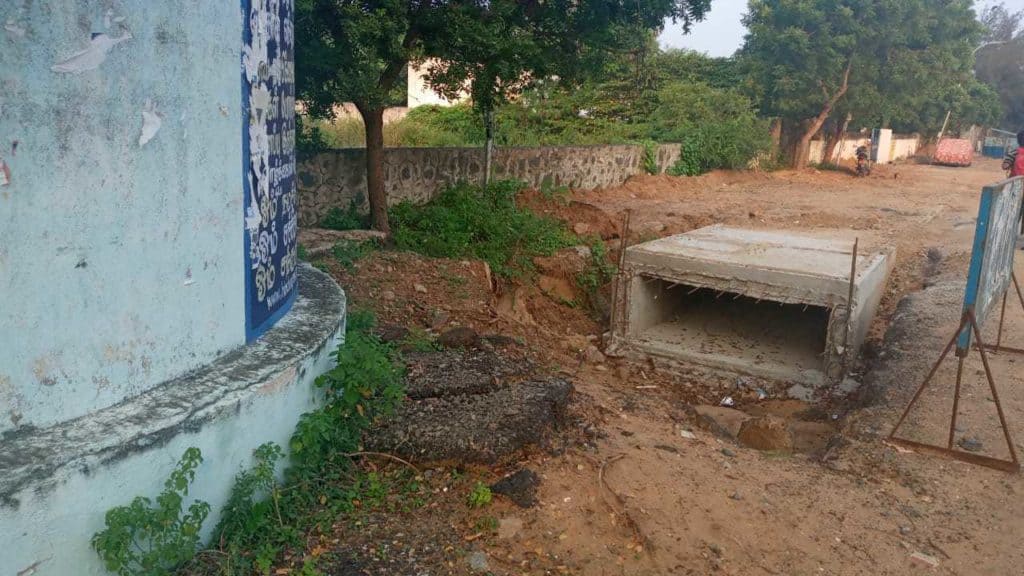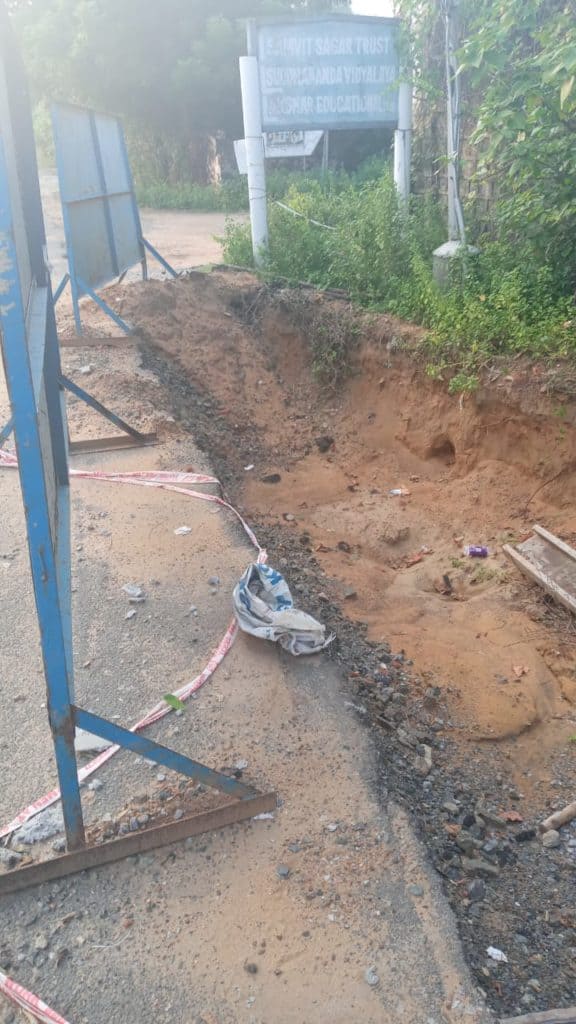A storm water drain project to be executed in areas along the East Coast Road has hit roadblocks with residents from several localities registering their protest. The residents reason that the areas where the drains are set to be laid did not see significant flooding during events such as the tsunami in 2004 or the floods of 2016 due to the sandy nature of the soil, making the drains redundant.
The 270-crore project is funded by the German development bank KfW and was mapped to cover the areas between Kottivakkam and Uthandi. But the work on the project has stalled with several protests from residents over the past few months, and the opposition culminating in a writ petition filed against the civic body in the Madras High Court.
The ISWD project
A master plan to construct storm water drains in the extended areas of Chennai was drawn up in 2012 under the Integrated Storm Water Drain (ISWD) project. Under the plan, the areas were divided into the Adyar and Cooum Basin, Kovalam Basin and the Kosasthalaiyar Basin. The launch of the project was announced on the floor of the state legislature by then Chief Minister J Jayalalithaa in 2014.
The project was to be completed in a phased manner with work on the Adyar and Cooum basins commencing first with funding from the World Bank. Six years on, this remains the only phase of the storm water drain network that has materialised. The work on the Kosasthalaiyar basin which will integrate areas in north Chennai is yet to begin.
The work on the now-contested Kovalam basin has been divided into three sections – M1, M2 and M3. The 52-km stretch under section M3, which covers Palavakkam, Kottivakkam, Neelangarai, Injambakkam, Sholinganallur, Kanathur and Uthandi, is the part of the project that has run into hot water with the residents.
Objection by the residents
The primary objection raised by the residents in the areas where the storm water drain is being constructed is that the areas with predominantly sandy soil do not need concrete drains, as the water drains into the soil. The residents allege that no consultation was held with them and the project was unilaterally commenced by the civic body.
The residents fear that the concrete structures being constructed will be counter productive and hinder the groundwater recharge levels. The residents call for the funds allocated for this purpose to be used for the provision of piped water supply and sewage system in the areas, which have been long -pending demands.
The entire 52-km stretch under the project saw protests by various residents associations calling for the project to be scrapped and resources redirected. The residents argued that since there is no adverse impact of flooding, the drains could become a source for concern if not cleaned properly.

“We have had no issues with flooding even when most of the city was affected. The water takes a few hours to percolate into the soil and there have been no instances where residents have faced problems”, says Rohit Menon, Secretary of the Sri Kapaleeswarar Nagar Welfare Association in Neelankarai.
Rohit adds that the residents have attempted to engage with the corporation on this issue and had raised objections as far back as when the project was first announced. But there was no response.
The residents also allege that the work that had begun was being carried out in a shoddy manner, pointing out instances where the construction is being carried out even when other facilities such as a pump house have been found to be in the way.

In the absence of a platform to share their inputs, the residents of Kapaleeswarar Nagar took the civic body to court. The civic body has filed a response to the concerns raised by the citizens and further hearings are set to take place on the matter.
Maintenance could be an issue
The Corporation of Chennai contends that the plan is necessary as the civic body had to keep around 75 pumps on stand by to remove stagnant water during the last cycle of rains. The proposed structure would help do away with this arrangement.
The officials also stated that the project would include eco blocs and percolation pits which will increase the quantum of rainwater harvested.
In evaluation of the proposed system, Professor L Elango of the Hydrology Department at Anna University says, “The difficulty will be in maintenance of the proposed infrastructure. TN made rainwater harvesting mandatory. But the rainwater harvesting structures are mostly improperly installed, just for the sake of regulation compliance. If this is done properly, there is no need for SWDs in a sandy area.”

The proposed SWD network has to be cleaned frequently. Even if the plan is good, the clogging of the recharge structure could be an issue that could exacerbate flooding, says Elango.
The extensive concretisation of areas, including the complete paving of roads, has been a cause for water stagnation across the city. Modification of this practice to allow small strips of sand on either side could allow for the natural percolation of the water into the soil, adds Professor Elango.
Citizens firm in their demands
“We will not be backing down on this issue as we have seen how the rest of the city has been affected. The needs of the community are different and the corporation did not engage in any dialogue, but went ahead with the plan. The stiff opposition by the community is what has brought the issue to the fore,” says Rohit.
Officials at the Corporation say that the diversion of funds to other projects is impossible as funding has been earmarked for this purpose. The tranche for building the M3 section has been released, amounting to Rs 270 crores. Kapaleeshwar RWA members said that the construction had been started only in parts which did not see a lot of opposition, but has been halted everywhere now.
The objections to the project has taken the civic body to the mat, with the matter also being taken up by the National Green Tribunal (NGT). The NGT has called for the constitution of an expert committee to look into the concerns raised by the citizens.
I am so v happy about this objection. It is very right that percolation is the best way to increase the water table. We have to fight for drainage.
Awareness created amongst esidents of Kapaleeswarar Nagar by the association headed by Mr.Rohit is really helping people to get united and fight for justification.
Congratulstions & Sincere appreciations to Mr.Rohit and residents.
When the existing Storm Water Drains in the city, like Mount Road etc are Not effective as seen from the Water logging experienced in the City, this is Totallly Not Needed for this Area , where water is naturally absorbed due to Soil conditions and type.
ECR Storm Water Drain is a Wasteful Project to benifit unknown.
Ecr Palavakkam Neelankarai KOTTIVAKKAM beach side localities do not need SWD. IT IS ABSOLUTELY USELESS AND DETRIMENTAL TO THE WATER GROUND WATER RECHARGE IN ECR BEACH SIDE AREAS. ADMK GOVERNMENT SHOULD DROP THIS SWD FOR BEACH SIDE AREAS IN ECR. HONOURABLE CM EDDAPADI PALANISAMI SIR SHOYLD IMMEDIATELY SCRAP THE STORM WATER DRAIN PROJECT FOR ECR BEACH SIDE LOCALITIES SUCH AD PALAVAKKAM, KOTTIVAKKAM, NEELANKARAI.
THANK U CHIEF MINISTER SIR FOR DOING THE NEEDFUL.
As a former resident of Neelankarai, I think storm water drains are unnecessary on this area, and a burden on the corporation. The money could be spent on tar topping of roads regularly.
Just reading this article and comments here after almost 4 years! What said before and feared to happen on the ECR did happen yesterday. There were floods on ECR I saw on the TV channels first time! When the govt body listens to public this is what is bound to happen!